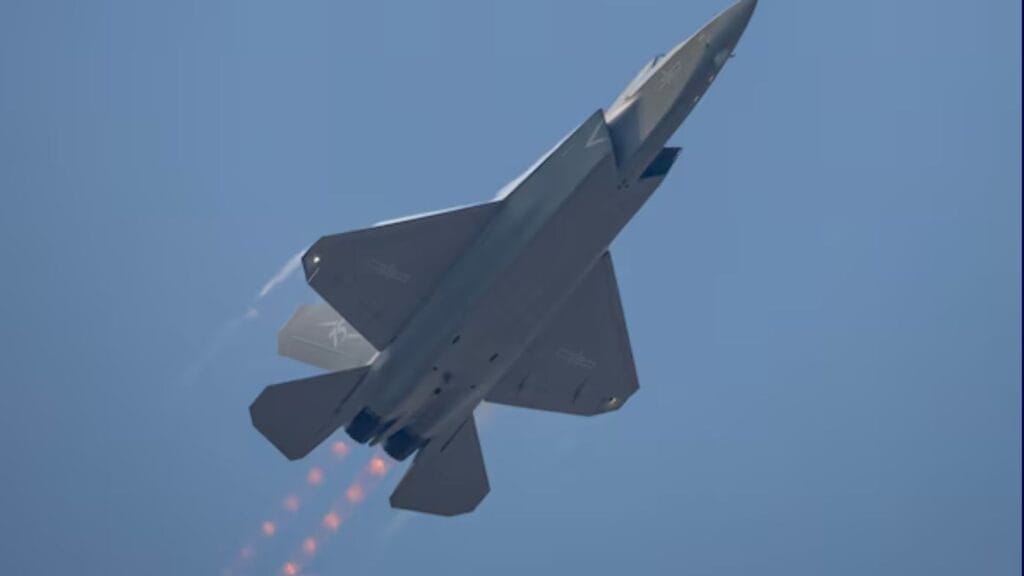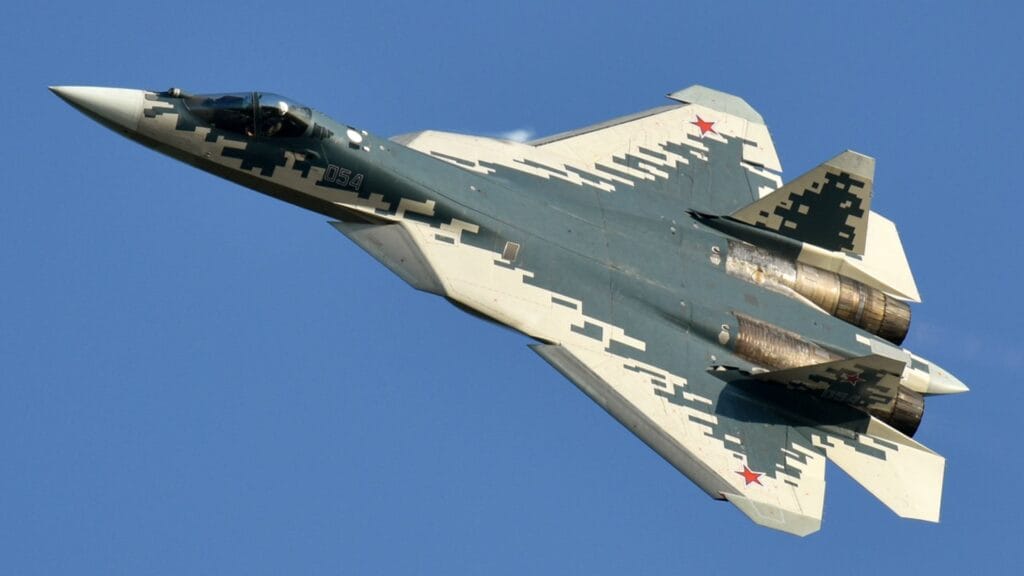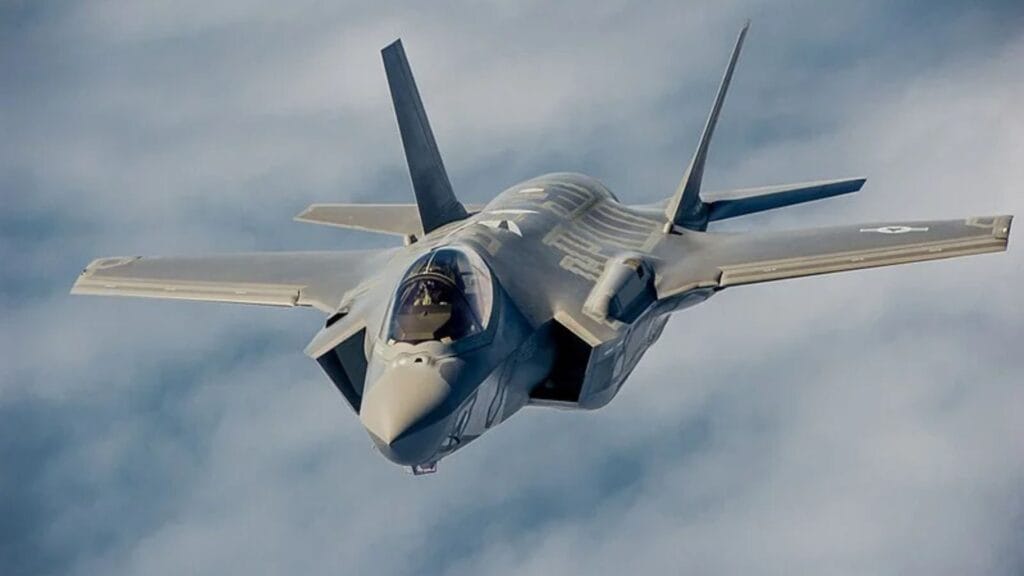China recently unveiled a new stealth fighter jet called the J-35A at its major civil and military air show in Zhuhai first of several steps in its quest for leadership in advanced military technology. The J-35A is a fifth-generation, multi-purpose fighter that looks quite close to the F-35A used by the United States, which provokes questions about the ability of the jet compared to the world’s top stealth fighters, including the F-35A and the SU-57 of Russia.

Background of the J-35A
China’s J-35A: Long in the Making China’s J-35A has been a long time coming to be designed and manufactured by Shenyang Aircraft Corporation under the state-owned Aviation Industry Corporation of China, AVIC. A revelation at Zhuhai, this fighter hit an interesting coincidence as it made its debut when it coincidentally fell on the 75th anniversary of the People’s Liberation Army Air Force (PLAAF), signaling it was significant towards building up China’s military power. The Zhuhai air show has nowadays turned into a turning point for demonstrating the military capabilities of China, as the latter pushes toward setting up an upper hand in the Asia-Pacific region.
ALSO READ | China Set to Unveil New J-35A Stealth Fighter Jet in Push to Rival US Air Power
The J-35A is an offshoot of the J-31, which China had put on display but never actually threw into operation. Its design closely resembles that of the U.S. F-35A with both the cockpit setup and the shape of the canopy for better pilot visibility. More modern features include reinforced landing gear and the ability to fold its wings, making the J-35A capable of being operated from any of China’s three, currently still trial-experimental aircraft carriers.
| Feature | China’s J-35A | US F-35A | Russia’s SU-57 |
|---|
| Generation | 5th generation | 5th generation | 5th generation |
| Primary Role | Multi-role stealth fighter, air superiority | Multi-role stealth fighter, air superiority | Multi-role stealth fighter, air, ground, naval targets |
| Developer | Shenyang Aircraft Corporation | Lockheed Martin | Komsomolsk-on-Amur Aviation Plant |
| Engine | WS-13 (potential upgrade to WS-19) | Pratt & Whitney F135 (most powerful fighter engine) | Saturn AL-41F1 (future upgrade to Saturn AL-51) |
| Stealth Capabilities | Limited public info on stealth coatings and radar tech | Advanced radar-absorbent coatings, reduced radar signature | Limited radar-absorbent tech, stealth-optimized design |
| Radar & Sensors | Advanced AESA radar, situational awareness | Electro-Optical Distributed Aperture System (DAS), advanced targeting systems | Onboard electronic AI co-pilot, extensive radar spread |
| Top Speed | Estimated Mach 1.8 | Mach 1.6 | Estimated Mach 2.0 |
| Carrier Capable | Yes, J-35A variant for carrier operations | No | No |
| Countries Involved | China only | United States, 8 allied countries | Russia only |
| Deployment Status | Early stage, in testing for future deployment | Widely deployed, active in several allied air forces | Limited production, only 1 operational unit |
| Weapons | Multi-role capable, internal and external loadouts possible | Multi-role capable, advanced internal weapons systems | Multi-role capable, AI-controlled weapons systems |
| Additional Features | Foldable wing panels for carrier compatibility | Helmet-mounted display system, EOTS for precision strikes | AI-assisted flight capabilities, pilot redundancy |
Watch China's latest stealth fighter jet J-35A conducting flight performances against the backdrop of the rainy sky on the second day of the #AirshowChina2024 #SoaringDream (Video: Liu Xuanzun/GT) pic.twitter.com/cwUbClsHii
— Global Times (@globaltimesnews) November 13, 2024Why the J-35A Matters
The development of the J-35A is significant for a few reasons. For one, it symbolizes China’s ambition to reduce its dependency on foreign tech, especially after facing trade tensions with the U.S. in recent years. The encroaching U.S.-China rivalry over Taiwan and the South China Sea goaded China into investing in indigenous aerospace technology, including military ones such as the J-35A.
According to PLAAF, the J-35A is a “medium-sized stealth multi-role fighter” with air superiority missions. But in comparison to the F-35A and the SU-57, does it stand up to competition?
Performance and Technology Comparison
Design and Stealth Features
The J-35A has a pretty much similar airframe and body to the F-35A, therefore it has a reduced radar cross-section. But hardly it is mentioned whether it uses radar-absorbent materials, which are used by the F-35A in hiding from the radar. These are fighter jets, single-seaters with single-engine, designed to evade radar detection, though the real stealth capabilities of this J-35A remain still unascertained.
Radar and Sensors
While the F-35A is equipped with advanced sensors like Electro-Optical Distributed Aperture System (DAS) and Electro-Optical Targeting System (EOTS), the sensor capabilities of the J-35A remain unknown. DAS on the F-35A gives the pilots a full view of circumstances, thus enabling them to identify threats and react in difficult conditions. Whether the J-35A detects any approaching attacks with similar technology is unknown.
Engine and Power
The Pratt & Whitney F135 engine is on the F-35A, and it is, to this day, perhaps the most powerful engine ever built for a fighter, getting to Mach 1.6 and still delivering great fuel efficiency and weapons-carrying capacity. China is still working hard to develop its high-performance jet engines and has long used Russian designs. The J-35A may also utilize the WS-19s of China, which would stretch its payload and power too, but the reliability of the engines may still be a ‘weak point’ for China. Reliable engines are critical for speed, load-in combat, and operational range.

Comparison with Russia’s SU-57
Russia’s pride, the stealth fighters SU-57, have a rather complicated history. Manufactured by Komsomolsk-on-Amur Aviation Plant, the SU-57 is the first jet produced by Russia since the Cold War. The radar system of the SU-57 covers its entire body, effectively giving it better detection abilities. However, this stealth fighter lacks a high-end stealth engine as Russia hasn’t yet finished the stealth-optimized Saturn AL-51 engine, instead, it’s utilizing the older AL-41F1 engine.
In terms of manufacturing, Russia has struggled to produce the SU-57 in significant numbers, with under 40 units in total. In comparison, China’s J-35A production and rollout appear more promising, as they’ve had a head start with J-20 production experience. However, whether it can match the SU-57’s powerful computer systems and potential AI capabilities for target tracking is still to be seen.
Strategic Implications
Given China’s strategic aim of positioning itself as a player in Asia, J-35A may well prove to be the game changer within that region regarding air supremacy. If China manages to get this aircraft road tested as reliable and efficient, then it would be adding a fighter firmly capable of being deployed from its aircraft carriers, a feat that would give China a denting presence within other Asian nations’ aerial capabilities. Foreign defense analysts would be following this closely as this jet is designed for deployment on China’s aircraft carriers. China will soon be able to stretch its reach far beyond its waters with the critical involvement of J-35A.

My Opinion: The J-35A is a step in the right direction for China, especially regarding self-reliance in defense technology. Questions about its stealth potential and also about using the capabilities of its engines remain open. China probably cannot produce anything approaching the level of capability of the F-35A engines, so it will likely remain in a disadvantageous position. For myself, at least, my opinion is that the J-35A, while certainly contributing to China’s influence, will not be able to stand up in areas like stealth, sensor range, and all-around reliability up to that of the F-35A.
That’s an interesting comparison between the J-35A, F-35A, and SU-57! As I see it, for the Chinese Air Force, especially with stealth and adaptability on aircraft carriers, that’s one significant leap forward, but without impressive histories of field performance, it’s hard to tell how it would really compare with the U.S. F-35A, which has a good-established record and cutting-edge sensor technology.
I’d also like to know just how much power to expect from the J-35A’s engines. China’s been run over by the Russian-made engines of old. Hopefully, WS-19 with the J-35A will actually mean a real-world range and power as promised. It’s just interesting to see each country going after a slightly different facet: the US is shooting for all-in-one functionality with the F-35, the Russians are setting their goal at rugged multi-environment usability with the SU-57, and now China is going for the multi-role capabilities with the J-35A.
What does everyone else think? Could the J-35A really put a challenge to the F-35 or SU-57? Or is it more like showing technological ambition rather than changing the game? Looking forward to everyone’s thoughts!
Analysis by Atul Raj






